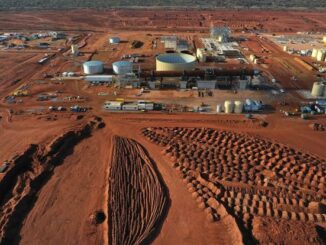
Essay by Eric Worrall
One of the interviewed migrants cites a power failure during a heatwave as being a motivating factor.
James Cook University study finds climate change a big factor in moving to Tasmania.
By Duncan BaileySeptember 25 2022 – 4:30am
Climate change is motivating more Australians to move to Tasmania, a new study finds.
…
Westbury resident Amy Dillon said the decision was for the betterment of her children.
“I think that for young families, we’re the ones with the kids who are looking to the future and with everything that has happened like the floods and bushfires in the past 10 years; it’s terrifying,” she said.
“If you’re paying attention and you’re worried about your children’s future you’re going to make choices based on that.”
…
Melbourne resident Jane Gardner bought a house in Launceston this year, and said the decision to move was made during the peak of the Black Summer bushfires in 2019.
“I had a newborn and the mercury was creeping close to 49 degrees. The power went out in my suburb, and it was too smoky to go outside.
“We were sitting in the bath trying to stay cool and I realised I didn’t want to do something like this anymore.”
“I’ve got a four-year-old and I’m just thinking about him and where he can grow up where the summers are still relatively cool.
…
The abstract of the study;
The Summers Were Getting Hotter’: exploring motivations for migration to Tasmania away from mainland Australia.
Osbaldiston, Nick (2022) ‘The Summers Were Getting Hotter’: exploring motivations for migration to Tasmania away from mainland Australia. Australian Geographer. (In Press)
DOI: 10.1080/00049182.2022.2056963
View at Publisher Website: https://doi.org/10.1080/00049182.2022.20…
Abstract
In recent times there has been a population turnaround in the island state of Tasmania sparked by an increase in in-migration of mainland urban dwellers. This paper argues that one of the major driving factors of this change is the quest for a new lifestyle in regional/rural life, that incorporates a desire for a temperate climate. As literature in lifestyle migration shows, this quest for a new life does not end once migration is over. Rather, the migration experience continues well after the move. In this paper, it will be shown how weather not only attracts migrants into Tasmania, but then encourages/discourages certain activities allowing the individual to engage in new ways of living. The paper suggests that while we need to be careful about romanticising this, we can potentially view this shift as emblematic of people’s relationship to climate change.
Tasmania, the coldest state in Australia, has a temperate oceanic climate. Summers are cool and winters relatively mild compared to cold places like the Northern USA or Canada. The Tasmanian climate is a lot like the climate in Southern England.
But Tasmania has its own problems. Home heating in cold Tasmania is a must during winter. Tasmania is blessed with abundant hydroelectric resources, but they sometimes have cold, dry years, during which energy is expensive and in short supply, just when you really need it.
I am fascinated by Melbourne Resident Jane Gardner’s description of enduring a 49C (120F) heatwave in Melbourne during a blackout, because concern about blackouts was an important part of my decision to migrate from England to Australia, though we reached very different conclusions about the best place to ride out the coming storm.
When I moved from England to Australia over a decade ago, I wasn’t worried about global warming, I was worried about spiralling energy costs and blackouts, about the coming energy crisis. It was obvious there was a risk energy would become unaffordable, because of the insane Western political fixation on renewables, and political hostility towards investment in reliables. So my big motivation in choosing a place to live was somewhere I could comfortably survive all year round, without needing lots of energy for heating or cooling.
My solution was the Fraser Coast of Queensland – cool enough in Summer so we could endure by opening a few windows, warm enough in winter that there was no risk to health if we had to ration home heating. Even though the Fraser Coast is much closer to the equator than Melbourne, the temperature rarely exceeds 35C (95F), unlike Melbourne, which suffers occasional Summer heatwaves where temperatures exceed 40C (104F).
While Tasmanian winters are milder than Northern US winters, I would love to know if Jane Gardner reconsiders her choice when she sees her first Tasmanian winter heating bill, or suffers a blackout on a freezing cold winter night. Though I suspect I already know the answer – the Fraser Coast has one of the highest immigration rates in Queensland.



